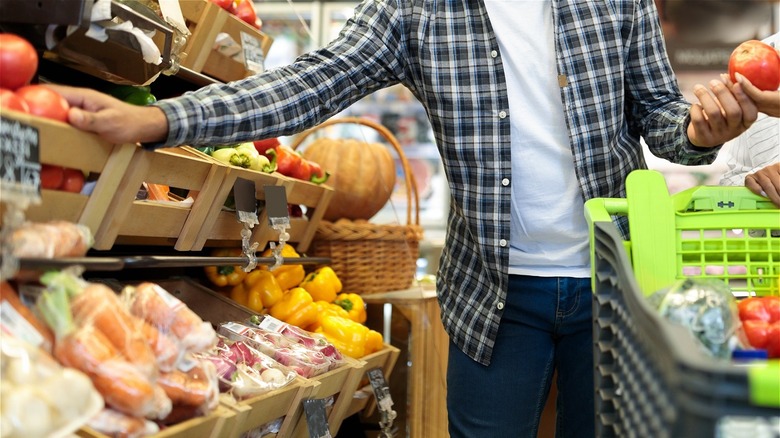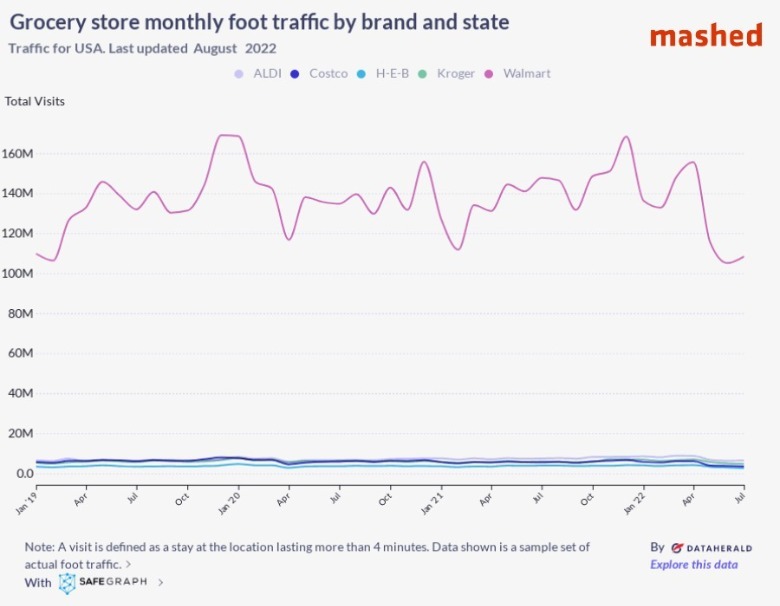Here's How Inflation Is Really Affecting Grocery Store Visits
If you ever want an update on the state of food inflation, pay a visit to your nearest supermarket. It's easy to see how the cost of common goods such as produce, eggs, flour, and ground meat are fluctuating simply by strolling down the aisles and taking note of the clearly labeled price tags. At this point in the global inflation crisis, you might think a trip to the store will tell you what you already know, and have known for months: that every food product — even the essential ones — are liable to drill a hole in your wallet.
In some cases, though, you might be surprised. Take boxed and canned wine, which has proven to be less affected by inflation than other goods thanks to the collectable market's reliance on "internal factors," including supply and demand, as opposed to outside factors such as labor shortages (per Vino Vest). On the other hand, products such as coffee grounds might just tip over your budget these days.
Regardless of unreliable costs, people still need to stock their pantries and fridges each week. Let's look at the foot traffic at major U.S. retailers such as Costco and Walmart over the last few years.
Walmart consistently comes out on top
According to SafeGraph data that shows foot traffic at five major U.S. grocery retailers from January 2019 to August 2022, Walmart has consistently brought in the most customers on average. The chain welcomed over 108 million shoppers in July 2022 alone, while H-E-B brought in just over 25 million, Costco around 34 million, Aldi around 63 million, and Kroger around 46 million that same month.
One would assume a grocery store's success during periods of widespread inflation is due to its low prices, but that might not be the whole story at Wally World. According to NPR, the chain has joined brands such as Target in "tweaking [its] merchandise mix to better respond to customers' changing demands." One example is Walmart's recent string of deep discounts in its electronic and back-to-school aisles, which John David Rainey, the brand's chief financial officer, tells NPR is a means of encouraging customers to add pricier food items to their carts. As a result, the chain may also be drawing in higher income shoppers who might not mind (or even notice) shelling out extra cash for their grocery essentials.
While it brought in significantly less traffic than Walmart, Kroger's Ohio outposts are also trying to grab customers attention by letting them gamble in the store. Meanwhile, discount chains such as Aldi have simply bolstered their discount models (per Insider) to appeal to money-conscious shoppers.

